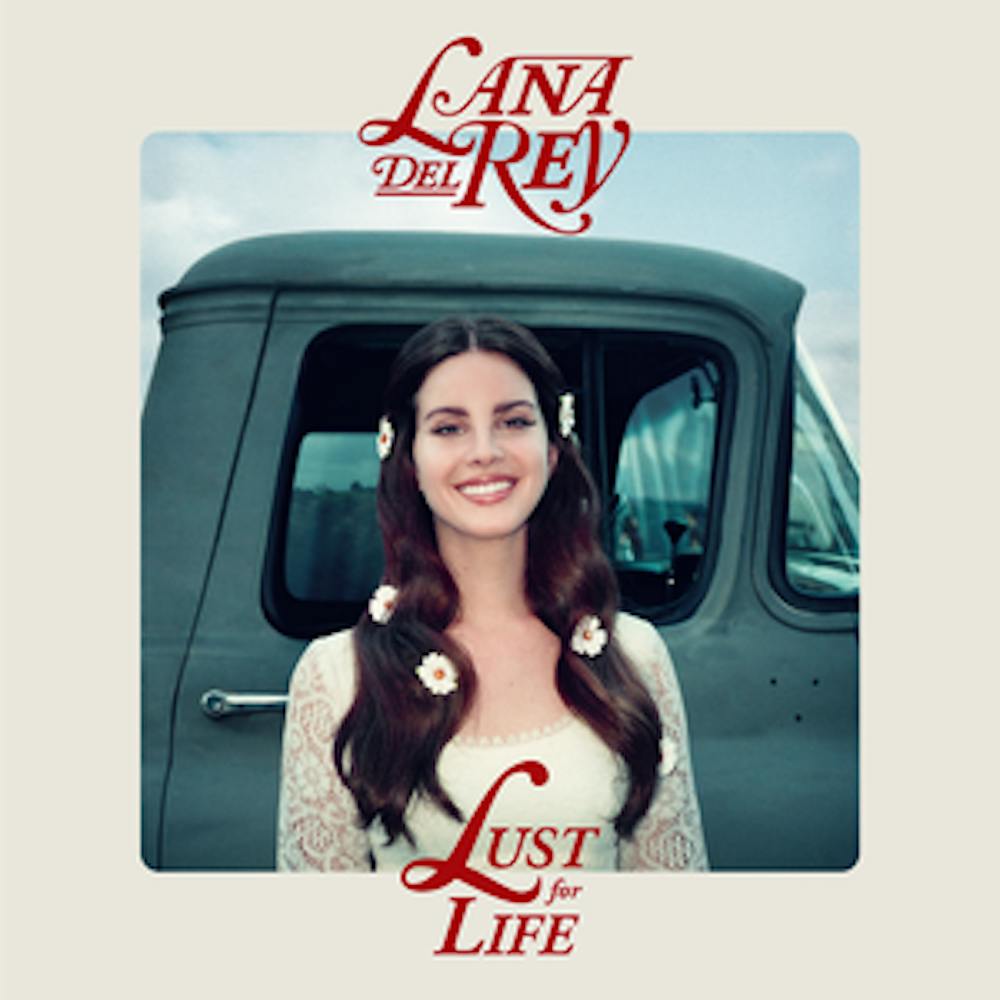“I wish I was dead already,” Lana Del Rey mused in a 2014 interview. It’s a controversial quote that, although taken deeply out of context by many, still effectively summarized the bleak, depressing, yet cinematic nature of her early career work. A more recent interview saw the singer reverse course on that stance — “F--k that guy,” she remarked about the journalist when asked about the infamous quote.
Unapologetically departing from her previous persona, Del Rey cited artistic evolution as her motivation. That’s exactly what “Lust for Life” represents — the title alone reveals a stark contrast from her first album “Born to Die.” Through an experimental production range and a more upbeat lyrical palette, Lana Del Rey fulfills her goals of artistic evolution, while also remaining true to the signature style that precipitated her rise to stardom.
The most obvious indicator of her stylistic renovation is the lyrical content of “Lust for Life.” Opener “Love” explores the driving emotion behind most of Del Rey’s work, but this time in a positive light — “Doesn’t matter ‘cause it’s enough / To be young and in love.” Pretty bright for someone who used to pass off lines like, “He hit me and it felt like a kiss” without batting an eye.
A later track, “When the World Was at War We Kept Dancing,” unsurprisingly promotes escapism during these uniquely uncertain times. Always one for Americana iconography, Del Rey admitted that she stopped using American flag symbolism in her work due to her opposition to President Trump. In “God Bless America — And All The Beautiful Women In It,” she empowers women to be strong and positive in the face of the current political scene. Once again, “He hit me and it felt like a kiss” seems long in the past. As a further testament to her evolution, the romanticized Americana motif is now replaced by resilient escapism — ironically enough, she’s waiting for America to be great again.
But for nostalgia’s sake, she retains elements of her signature sadcore, just to remind everyone that she’s still Lana Del Rey. In “13 Beaches,” she resignedly recounts a story of how one day she went to 13 different beaches before finding one without paparazzi. She compares her hiding from the paparazzi with her hiding her emotions — “It hurts to love you, but I still love you / It’s just the way I feel.”
Another prime differentiator of this album is Del Rey’s willingness to experiment with production, incorporating elements from various genres into several tracks. Although she had drawn influence from hip-hop in much of her previous work, “Summer Bummer” saw the singer make a full commitment to the genre, featuring an enchanting trap bass riff, a more than capable verse from rapper A$AP Rocky and Migos-esque ad-libs from Playboi Carti. The instrumental and singing style of “Tomorrow Never Came” clearly elicits The Beatles, and even features John Lennon’s son, Sean.
As with her sadcore lyrical themes, though, the slow, mellow and glamorized retro ambiance of old remains definitive of her music. “Coachella — Woodstock in My Mind” retains the cinematic 60’s feel that was fundamental to the romanticized world of her early work, while “13 Beaches” has the singer sounding as delicate as ever.
“Lust for Life” ultimately manifests itself as a next step in the artistry of the embattled Lana Del Rey. Admitting that she felt “stuck in the same spot” after her first three albums, the latest LP is a natural evolution that sees her expand her musical range while also remaining true to her roots. Look no further than the album cover for an appropriate metaphor — as with all her previous releases, the cover of “Lust for Life” features Del Rey posing in front of a car. Only this time, she actually smiles.







